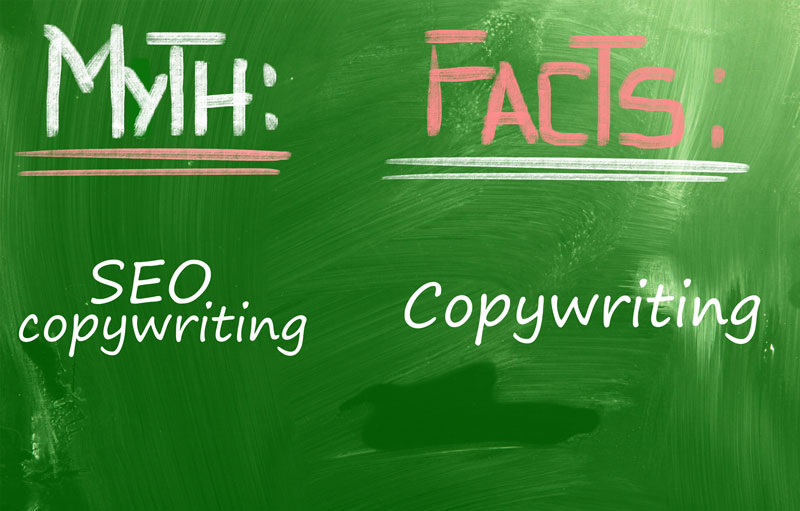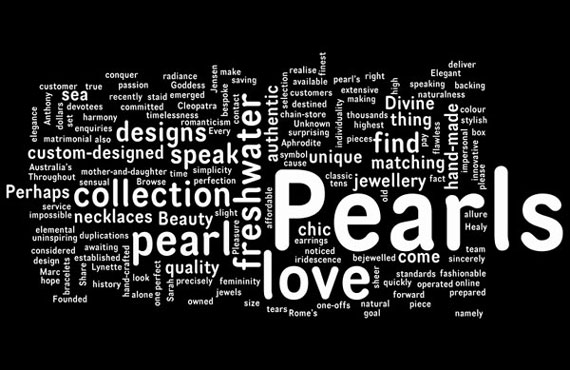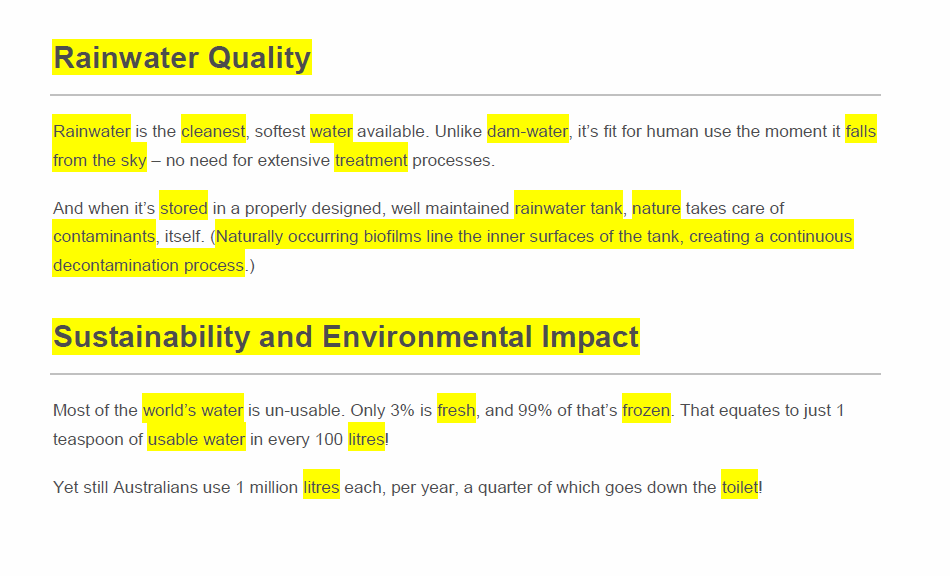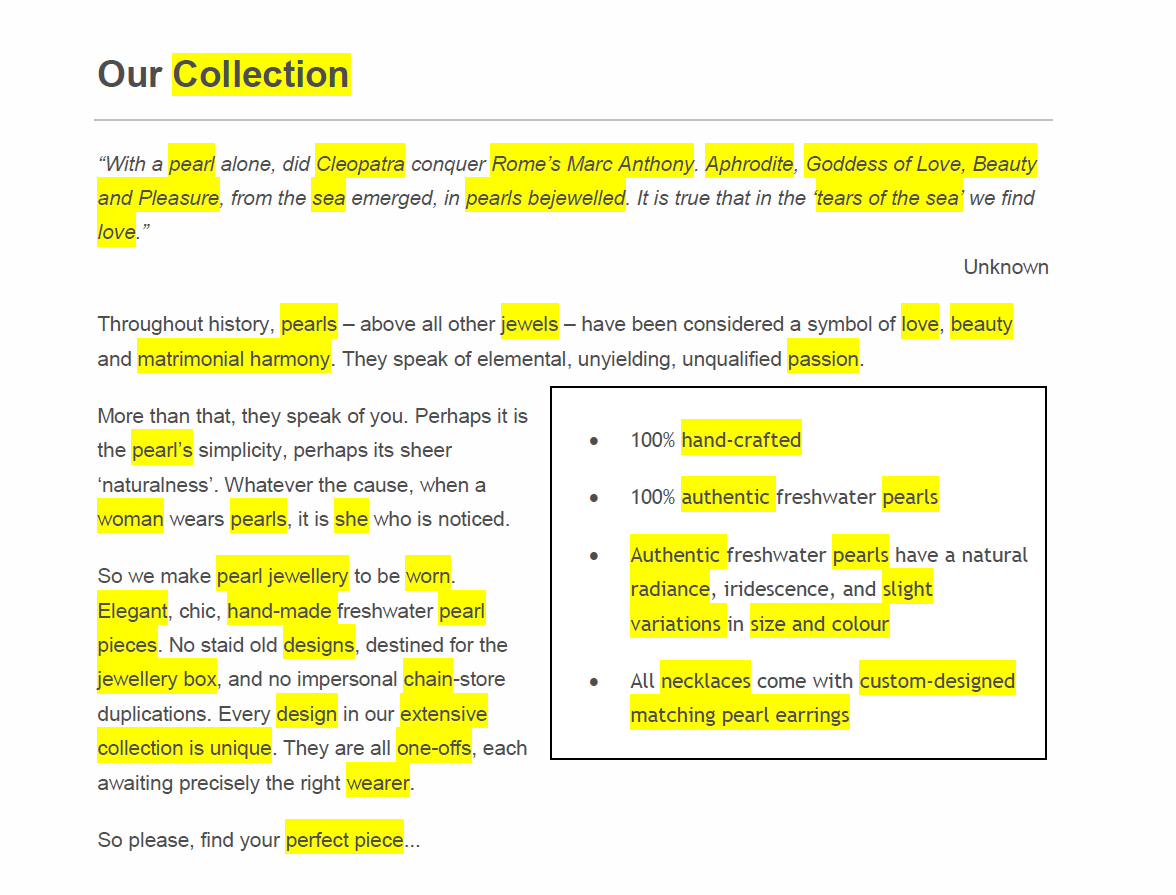Don’t be fooled; SEO copywriting ain’t all that
July 15, 2015 • Glenn Murray

I’ve been an SEO copywriter since 2003. I promote myself as an SEO copywriter, and a lot of my work is for clients who want SEO copywriting.
So what I’m about to tell you may come as a bit of a surprise…
SEO copywriting isn’t as important as you think. Certainly not as important as you’ve been told.
Don’t get me wrong. I’m not questioning whether search engines consider your copy when figuring out what your site’s about and how high to rank it.
What I’m suggesting is that the search engines are smart enough that we don’t have to optimise our copy any more. Not much, anyway.
Helpful, informative, on-topic copy naturally contains most, if not all, the elements Google looks for when assessing relevance. If that’s the sort of copy you’re writing, you can almost forget about optimising it.
Assuming someone’s doing keyword research to choose the most appropriate keyword phrases to target, and planning clusters of pages around those phrases, all we copywriters need worry about is writing helpful, informative, engaging, compelling, on-topic copy.
Indeed, I’d say if you are focusing a great deal on SEO in your copy, there’s a good chance you’re not writing for readers at all. And you’re breaking the no.1 rule of SEO copywriting: write for readers first.
Don’t believe me? Here’s proof…
Let’s say my client asks me to write SEO copy for her cooking website. If I were consciously focusing on SEO, I’d consider things like:
- Keyword frequency – Have I used “cooking” often enough on this page?
- Keyword prominence – Have I used “cooking” in my headings, bulleted lists, bolded bits, etc.?
- Subparts / stems – Have I used “cook” and “cooks” often enough?
- Related terms – Have I used “chef”, “ingredient”, “recipe”, “gourmet”, “cuisine”, “taste”, “aroma”, “oven” and so on?
- Synonyms – Have I used “baking” and “barbequing”?
- Modifiers – Have I used “pastry cook” and “short order cook”, just for good measure?
Now, below are 4 examples of non-SEO copy I’ve written over the years. For each, I’ve highlighted in yellow items 2-5 from my list above, and I’ve also generated a word cloud showing the most frequently used words in the document (item 1 in my list above).
And I swear, I didn’t optimise them at all during this exercise. I performed this analysis as much for my own understanding as for this post.
Example 1 – Some brochure copy I wrote for a rainwater tank manufacturer
Here’s the word cloud showing the most frequently used words in their brochure copywriting:

As you can see, without any optimisation, my brochure copy looks fine. “Rainwater” and “tanks” appear to tie for 2nd most frequently used. Interestingly, “water”, a subpart of “rainwater”, is 1st, and “tank”, a subpart of “tanks” is 4th. What’s more, most of the other frequently used terms are related to the business of manufacturing and selling rainwater tanks.
Now here’s a screenshot of the copy itself with keywords, subparts, stems, related terms, synonyms and modifiers highlighted in yellow. (Click to see the whole document.)
Example 2 – Some web copy I wrote for a freshwater pearl jewellery retailer
Here’s the word cloud showing the most frequently used words in their website copywriting:

Without any optimisation, “pearls” is clearly the most frequently used word, “freshwater” seems to be about the 5th most frequent, and “pearl” is the 4th. “Jewellery” isn’t as frequently used as I would have had liked, had I been optimizing the copy, but when you consider the whole – including the fact that most of the other frequently used terms are somehow related – I’d suggest it’s fine as is.
Now here’s a screenshot of the copy itself with keywords, subparts, stems, related terms, synonyms and modifiers highlighted in yellow. (Click to see the whole document.)
Example 3 – Some web copy I wrote for an executive search firm
Here’s the word cloud showing the most frequently used words in their website copywriting:

Without any optimisation, “executive” is the 4th most frequently used word in the copy, and “search” is the 2nd most frequent. And once again, you’ll note that many of the other frequently used words are related to the executive search domain.
And here’s a screenshot of the copy itself with keywords, subparts, stems, related terms, synonyms and modifiers highlighted in yellow. (Click to see the whole document.)
Example 4 – Some web copy I wrote for a concept artist
Here’s the word cloud showing the most frequently used words in his website copywriting:

Once again, without any optimisation, “concept” seems to be no.1, and “art” looks like no.3. Note also that the other frequent terms are nearly all somehow related to concept art.
And here’s a screenshot of the copy itself with keywords, subparts, stems, related terms, synonyms and modifiers highlighted in yellow. (Click to see the whole document.)
Summary
As you can see, almost every page in every sample is heavy with instances from the list of SEO copywriting elements above. Maybe not every item on every page, but, it’s important to remember that Google isn’t looking for specific statistics, nor is it checking things off a list as I’m doing here. It’s looking at the entire page, and the neighbouring pages (and a whole lot of other things), and making judgments based on the whole.
Bearing that in mind, it’s hard to imagine Google needing more from these samples. I’m confident it could tell that the Formit copy is relevant to searches for “rainwater tanks”, the Divine Pearls copy is relevant to searches for “freshwater pearl jewellery”, and so on.
Yes, I know I’ve chosen only 4 samples of my copy, but I chose them because I knew they were definitely NOT optimised. So I’m confident I’d find the same results if I analysed more. And I don’t think it’s just me. I suspect if you analysed any decent copywriter’s work, you’d come up with similar results.
Helpful, informative copy doesn’t require optimisation. It’s the topic selection and site structure that require SEO thought. Someone needs to:
- Do some keyword analysis to identify what customers are searching for;
- Plan a cluster of pages around each target keyword phrase; and
- Supply the copywriter with a list of topics to write about (preferably one topic per page).
All we copywriters need to do is write helpful, informative copy on the topics supplied. Exactly as I did in the 4 samples discussed above.
IMPORTANT NOTE: Also bear in mind that the samples I’ve analysed here are high level pages. Home, About Us, that sort of thing. More often than not, these pages would be supported by a great deal of very focused blog content, which would naturally contain even more keywords, related terms, synonyms, etc.






Peter wrote on July 14th, 2015
So if you write well your writing is effective... even for bots! :) This calls to mind a seminar given by a translation firm on writing for translation. A fellow writer and I remarked on the way out, "so if you write well it'll translate better. Derr!".
Reply
Glenn Murray wrote on July 15th, 2015
Exactly! :-)
Reply
Kate TOon wrote on July 15th, 2015
HERE HERE! Even though I call myself an SEO copywriter, I don't REALLY believe there is such a thing these days. I actually turn down jobs where they request shoe horning in keywords 15 times and if someone mentions keyword density I'm likely to hang up.
Reply
Kate TOon wrote on July 15th, 2015
And when I said HERE HERE, I meant HEAR HEAR - it's been a long day :-)
Reply
Glenn Murray wrote on July 15th, 2015
I don't know that I've ever turned one down, exactly. But I have found that people requesting that sort of copywriting tend not to value it much, so they don't have the budget to afford me (or you).
Reply
Glenn Murray wrote on July 15th, 2015
HAHA! Good to see someone else gets that mixed up. I have to look it up every time! Tired or not!
Reply
Patricia Skinner wrote on July 15th, 2015
Well said Glenn. I'm actually graduating away from SEO because I object to Google's policies these days. I think social media is more important than SEO these days.
Reply
Glenn Murray wrote on July 15th, 2015
Thanks Patricia. :-) Yeah, I got stung by one of Google's crazy policies recently too. A manual spam penalty because of my article marketing from more than a decade ago! Back when article marketing wasn't frowned upon. (And my articles were all good quality too!) But I wouldn't say I think social media is *more* important than SEO. I think it's an integral part of any SEO strategy, and if done properly, a lot more than that. But Google still brings the majority of my new business...
Reply
James wrote on July 27th, 2015
In 2015 the algorithms have a very strong focus on UX metrics - ie, whether or not real humans are willing to read the damn thing - so good SEO copywriting has to be good copywriting first and foremost.
Reply
Glenn Murray wrote on July 27th, 2015
Yep. :-)
Reply